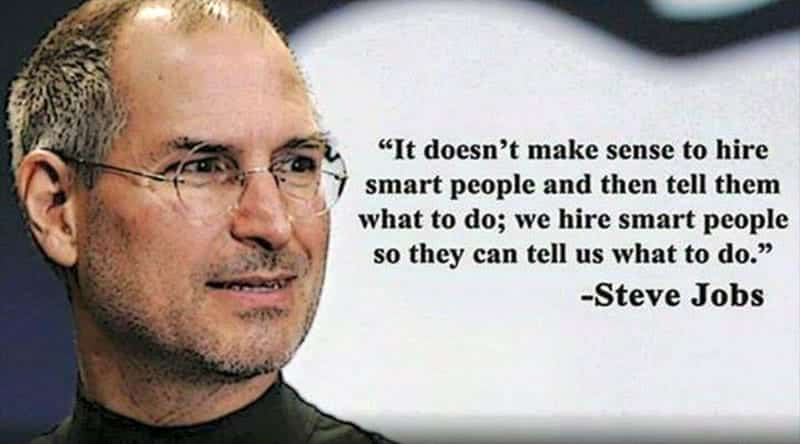
Over the course of my years as a Certified Scrum Master and ICF (International Coach Federation) Certified Leadership Coach, I have personally observed that organizations are not making nearly as much progress as they should or want to with their Agile and Scrum implementations. Something is fundamentally broken and needs fixing.
Organizations are not making nearly as much progress as they should or want to with their Agile and Scrum implementations. Something is fundamentally broken and needs fixing.
Evidence, Signs and Symptoms of Failure
- Agile project failure rates are still too high. Survey outcomes continue to indicate disappointing results. According to one recent respected Agile survey, 9% of Agile projects were considered “Failed” and 52% remain “Challenged.” That leaves just 39% deemed “Successful.” When has a 39% success rate ever been good enough (except for maybe the weather forecasts in New England)?
- Employees continue to “check-out” in record numbers in the workplace. The most recent Gallup State of the American Workplace Report reveals that 67% of employees are disengaged – either actively spreading venom to co-workers or passively punching the clock. The 30 percent left are none too happy.
The Question
If Agile and Scrum are the de facto standards in IT/Engineering organizations and gaining mainstream acceptance elsewhere, why are we not seeing these project and people trends dramatically improve?
If Agile Is So Great, Why Is This Happening?
This answer may only scratch the surface but the main reason for our Agile project failures is that we’ve lost focus on what the original Agile framers understood to be the most important Agile value: “Valuing individuals and interactions over process and tools.” In other words putting our people first.
Now the hard part – why is this happening?

If you accept the premise, I would now like to point my Certified Scrum Master and Leadership Coach finger directly at what I consider to be the true underlying culprit: top-down, command and control style leaders who refuse to adapt to a new way of leading. Organizations, leaders and middle managers who insist on telling people what to do, how to do it, when to do it, etc. I have witnessed this behavior time and time again and can only say that it is an absolute employee morale and project killer.
Not convinced? Consider this excerpt from the Scrum Alliance 2016 State of Scrum report:
…70% of survey respondents say the primary cause of that tension is adherence to top-down, command-and-control approaches to management.
And from the Harvard Business Review Report Agile Practice: The Competitive Advantage for a Digital Age, one of the key reasons for ongoing challenges in Agile implementations is that “management finds it hard to change from taskmasters to coaches and resource providers.”
To some, Agile, it would seem, be damned.
Maybe they never saw the infamous Steve Jobs quote:

The good news is that it doesn’t need to be this way and Agile was intended to change this – there is a way forward.
Solutions and a Way Forward
First a quick story:
When I was young my father was an executive at a large paper manufacturing company. As a hardworking executive he used to go into the office many Saturday mornings and sometimes he would take my young brother and me along. We roamed the halls playing Nerf football and mostly made a mess of the place.
But when we took a break to see what dad was doing, we noticed something profound: he was walking up and down the factory plant floor, taking time to talk to the people there, asking them how they were doing, how their families were doing, what issues they were having at work and what he could do to help them.
And they responded with smiles and hearty discussions about everything from the kids to spouses to the machines that needed upgrades. What stood out to me is that he really cared for these folks and they in turn cared for him. Later I learned that when he really needed them to go the extra mile– they did it without hesitating. Wow.
What stood out to me is that he really cared for these folks and they in turn cared for him.
A Way Forward – Suggestion #1
Leaders at all levels – you must invest the time to get to know and truly care for the people you work with and who work for you. Establish relationships with them. Learn about their families and the personal and workplace issues that are most important to them. Connect and engage with them regularly. Encourage and support their personal and professional growth. Then watch the magic start to happen!
Special note: if you aren’t the type of person who can really care for the people you work with, you may want to consider a less people-intensive career. You may also stop reading right here.
A Way Forward – Suggestion #2
Leaders – admit publicly to your employees that you have a command and control “people” problem and are committed to working with them to do something about it.
A Way Forward – Suggestion #3
Start working to change the company culture from command and control to a Coach Approach style of leadership. There’s plenty of information available on just what it means to adopt a Coach Approach:
- Ask probing questions
- Listen closely for the answers
- Guide
- Encourage
- Gently direct vs. dictate
A good starting point for more information is the International Coaching Federation. Get started and watch the magic happen!
A Way Forward – Suggestion #4
Reinvest in Agile and Scrum training for everyone in the organization. Identify the obstacles and barriers to success and put a SWAT team together of leaders and influencers from all levels of the company committed to breaking those barriers down. Demonstrate to the people who work for you that you are committed and believe in the process by which you will all work together to succeed.
A Way Forward – Suggestion #5
Hire experienced and Certified Agile Coaches, Scrum Masters and Trainers to help with your rollout. There are too many pretenders out there – buyer beware – so check references, credentials, and do your due-diligence to make sure you’re getting the kind of help you need.
There are many other steps along the path to renewed Agile focus on people and Agile success but these few should get you started and on your way to reaping the benefits.
Final Thoughts
So, there you have it – one Certified Scrum Master’s thoughts on how to bring the focus back to your people and truly Make Agile Great Again!
Are you ready to jump on board? Have a question or comment? Let us know in the comments below!
(Thoughts expressed copyright Gene Sorbo, Strong Tower Solutions LLC, 2017)






















































